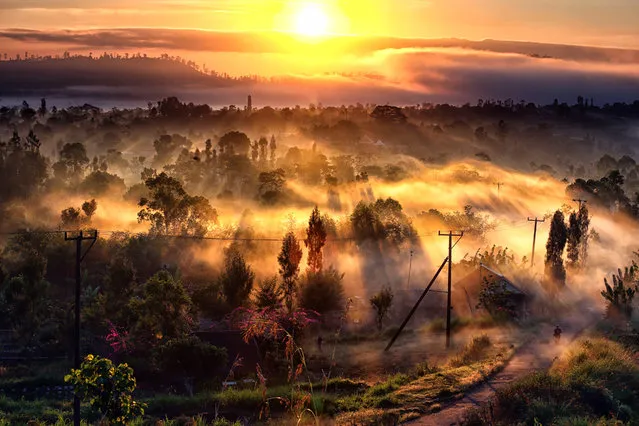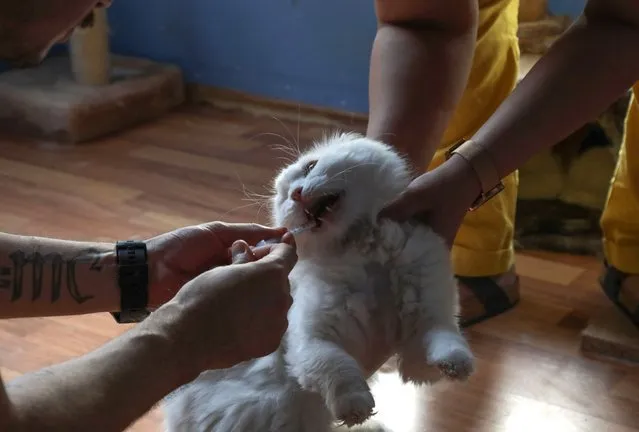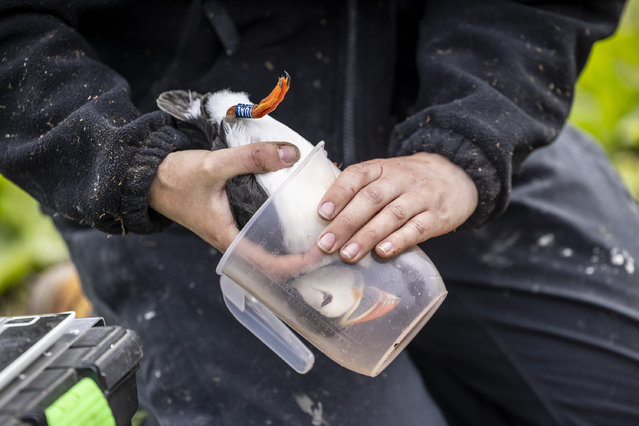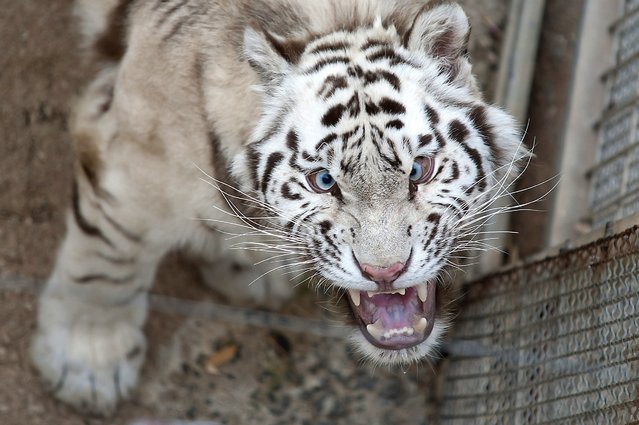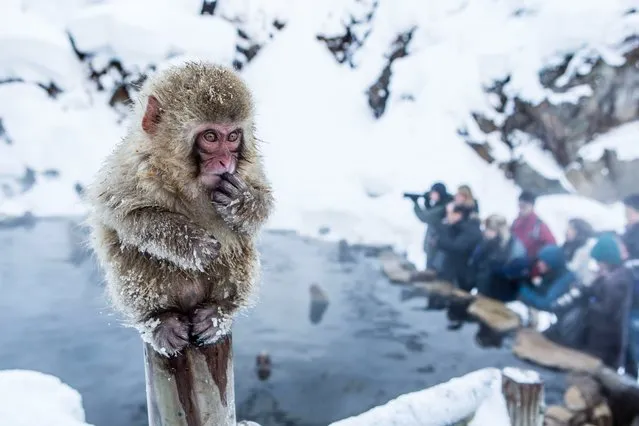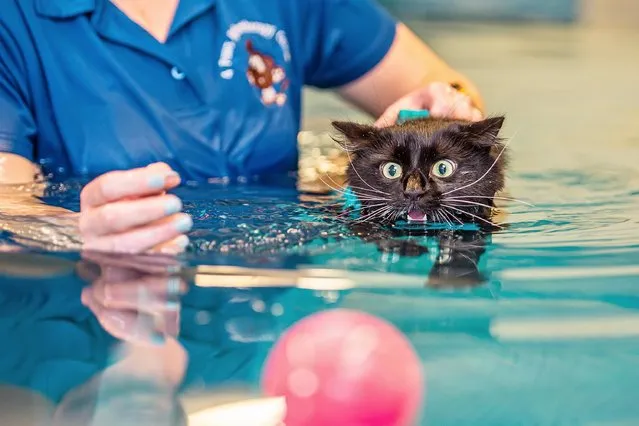
Rocky the cat's recovery from a nerve condition in his legs is coming along swimmingly – thanks to regular hydrotherapy sessions at a 20ft-long swimming pool in United Kingdom in the second decade of March 2022. The two-year-old wears a life vest to help keep him afloat and needs a plastic toy to lure him from one end of the pool to the other. (Photo by Max Willcock/BNPS Press Agency)
03 Apr 2022 04:50:00,post received
0 comments

